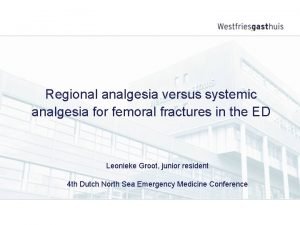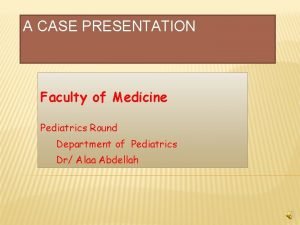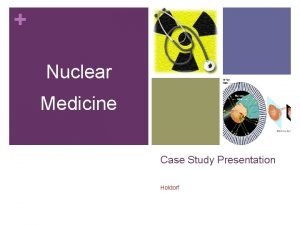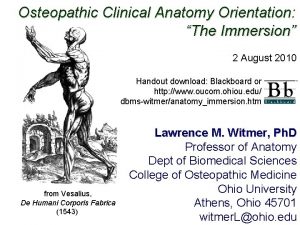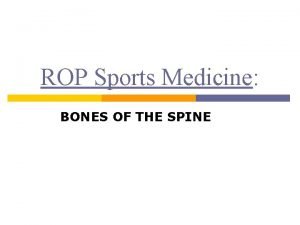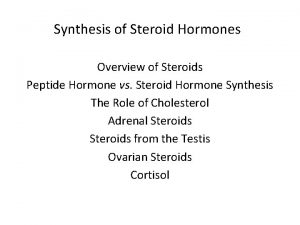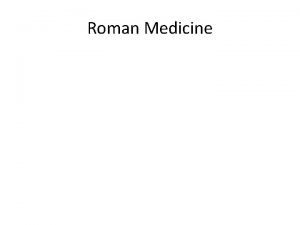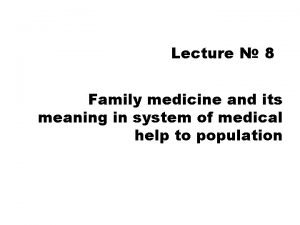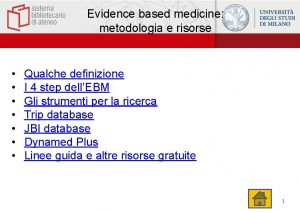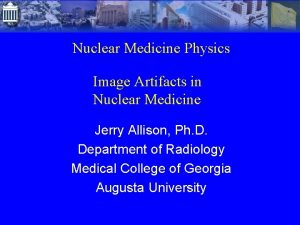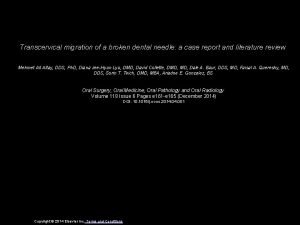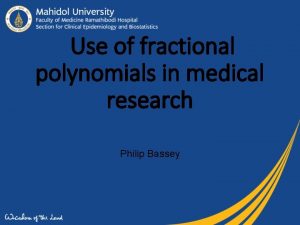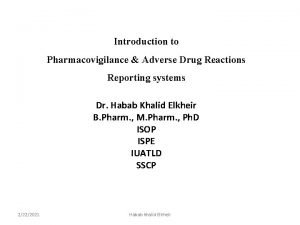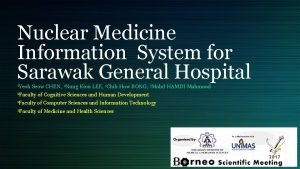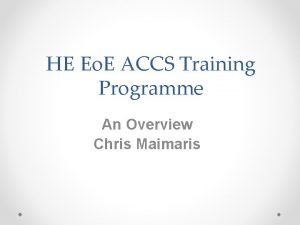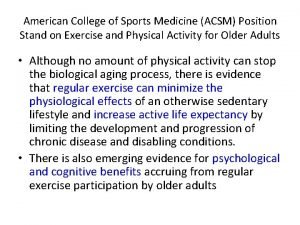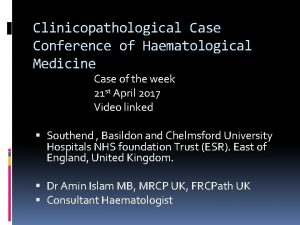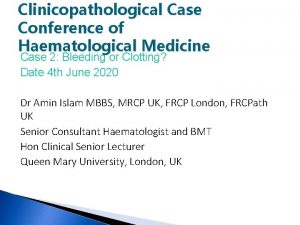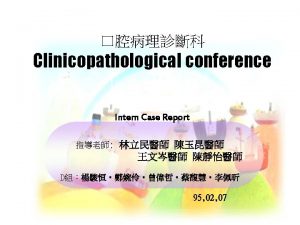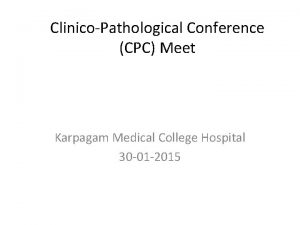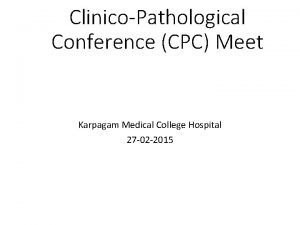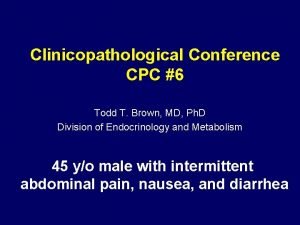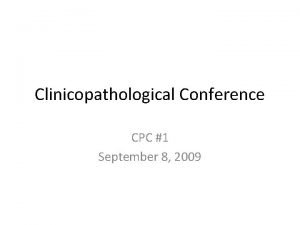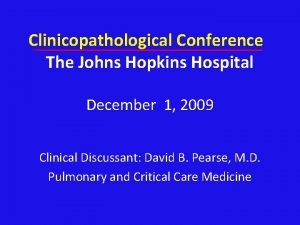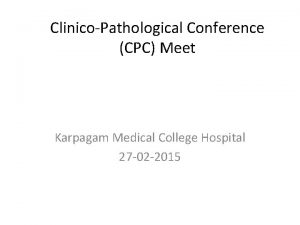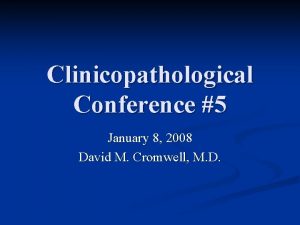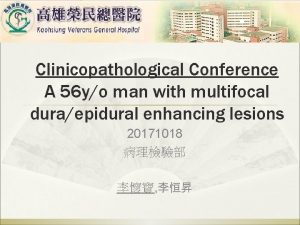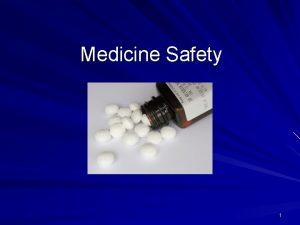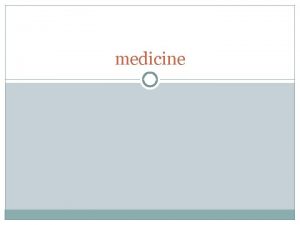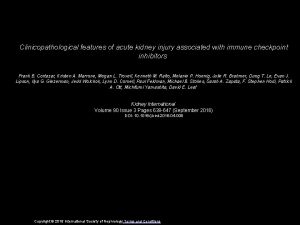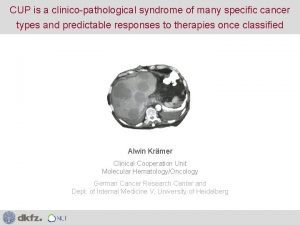Clinicopathological Case Conference of Haematological Medicine Case of










































- Slides: 42

Clinicopathological Case Conference of Haematological Medicine Case of the week 19 th February 2018 Video linked Southend , Basildon and Chelmsford University Hospitals NHS foundation Trust (ESR). East of England, United Kingdom. Dr Amin Islam MB, MRCP UK, FRCPath UK Consultant Haematologist Hon Clinical Senior Lecturer Queen Mary University, London

78 years old gentleman �Admitted to hospital via ED � with progressive decline in ET for 4 -6 weeks �With increasing lethargy �Tiredness and SOB �Night sweats for 6 weeks

contd �He also noticed lumps for last 2 weeks In the cervical and axillary area. �Night sweats getting worst in the last 3 weeks.

PMH �OSA , CPAP on/off HTN Medication �Perindopril �Indapamide �No drugs allergy

Bloods in ED �HB 69, MCV 89: normal �WCC 7. 2, lymp 1. 79, neutrophils 6. 26, PLT 332 �LFTS: bilirubin 23, rest normal �Creatinine 132, CRP 12 �Bone profile : normal, Calcium 2. 63 �Full clotting screen : normal

What blood test would you do next?

Blood film

Haematology review and Further blood tests �LDH 670: high �DAT : positive Ig. G 4+, Anti. C 3 d 3+ �Reticulocytes 6. 3%: High �Haptoglobulin 0. 3 : Low �Viral serology sent �CT CNAP: requested �BMAT: Arranged �SPE: Ig. M pp 7 gm/l kapa

CT CNAP

Rt renal mass not characterised on CT

Suggest a possible diagnosis and next approach �What tests or investigations would you do before starting treatment?

LYMPH NODE BIOPSY left axillae sent �Every effort should be taken to do CT CNAP and biopsy taken before commencement of steroids if LPD suspected

Initial treatments commenced �Blood transfusion in AE �Needs to check compatibility �Elution study at NBS �Emergency: least compatible bloods �Folic acid indefinitely �Corticosteroid 1 mg/kg do after biopsy �Ppi �Blood sugar monitoring daily as on HD steroids

Further test �Viral serology negative �HIV negative �ANA : negative �ECHO EF 60% normal

Bone marrow test �Bone marrow aspirate �Haemodiluted but cellular � 15 % of morphologically lymphoplasmocytoid cells � 5% plasma cells are noted �Aw trephine

Bone marrow trephine HE stain

Immunophenotying �MDT Summary: Low-level CD 5/10 - B-NHL by flow. Unable to specify further. 3% of WBCs (14% of lymphocytes) are CD 19+, CD 5 -, CD 23 -, CD 160 -, CD 200+/-, Kappa restricted B-cells.

Some immunohistochemistry done �CD 3 �CD 20 �CD 79 A �CD 10 �CD 15 �CD 30 �CD 38 or CD 138 available

CD 20

Bone marrow diagnosis �A possible T cell lymphoma suggested with CD 15 positivity

Lymph node biopsy results


MDT recommendation �Treat with R-CHOP �No Etoposisde as elderly �Total 6 courses �Consider PET after 2 cycles to assess response �Hb improved to 112 on tapering dose pred

Patient admitted for RCHOP �On admission right foot noted to be cold, blue and pulse couldn't be palpated – �vascular team involved.

CT Angiogram

�CT Angiogram showed small right CIA aneurysm with some mural thrombus. Occlusion of the right SFA. �Run off is seen into anterior tibial artery and peroneal arteryocclusion of the right SFA. �Thromboembolectomy (Right CFA) and calf fasciotomy �IV Heparin post op

Complicated with �Further Right leg ischemia - operated on several times embolectomy done �subsequent below knee amputation �Complicated with stump infection and further ischemia �Above knee amputation

�Anti cardiolipin antibodies negative �Thrombophilia test ; NAD

RECEIVED 1 ST CYCLES OF CHEMO as RCVP ( modified) � 8 WEEKS AFTER THE DIAGNOSIS �DELAY DUE TO SURGERY AND INFECTION �WAS STILL ON PREDNISOLONES TAPERRING DOSE

Readmitted 10 days post chemo �With fever and cough. �Had a periarrest in A and E due to hypotension. �CXR showed right sided consolidation. �HB 111 WCC 12, neutrophils , PLT 270, CRP 75 �Treated with tazocin and clarithromycin. �Improved

WCC rising not on GCSF

Film high power

What test next?

Flow report � 8% of WBCs are CD 138+ CD 19+ CD 56 - , c. D 117 - Cyto kappa restricted plasma cells. 3% of lymphoid cells have a dual CD 4/CD 8 ratio ? incidental �Please note that the previous B. M. sample (October 2016)was reported as having a small. CDl 9+ CD 5�CD 23 - CD 38+ B cell clone.

Conclusion �The peripheral blood film showed 40 % plasma cells �peripheral blood flow cytometry consistent with �A diagnosis of plasma cell leukaemia/ angioimmunoblastic T cell leukaemia �prognosis of less than 3 months. �started on steroids and thalidomide.

Learning points point Against myeloma �CD 19 +, CD 56 -, CD 117 – �Ig. M paraprotein �EBER + on histology �No real lytic bone lesion on scans and x rays �CD 19 almost always negative in myeloma �CD 56 + 70 -80% Myeloma, �CD 117 20% myeloma �CD 20 + 5 -10% myeloma aberrant expression

The final possible diagnosis overlap between �Plasmablastic lymphoma and angioimmunoblastic T cell lymphoma/leukaemia

AITL �Angioimmunoblastic T-cell lymphoma (AITL) �an uncommon subtype of mature peripheral T-cell lymphoma (PTCL). �The history of AITL is much longer and deeper than the literature would suggest given the many names that has preceded it. �Advanced stage disease is common with uncharacteristic laboratory and autoimmune findings that often slow or mask the diagnosis. �Significant strides in the immunohistochemical and molecular signature of AITL have brought increased ability to diagnose this uncommon type of PTCL.

�The 2016 World Health Organization (WHO) classification of lymphoid neoplasms recently acknowledged the complexity of this diagnosis with the addition of other AITL-like subsets. �AITL now resides under the umbrella of nodal T-cell lymphomas with T Follicular helper phenotype.

�Various regime used �Typically in the UK � CHOEP X 6 followed by �ASCT �Investigational �Brentuximab vedoitin where cells are CD 30 positive with CHOEP �single agent or �when relapsed

� 3 years progression-free survival rates remain disappointing, ranging from 40% to 50%

�Questions �Thank you for your attention
 Dutch north sea emergency medicine conference
Dutch north sea emergency medicine conference Best worst and average case
Best worst and average case Emergency medicine case presentation
Emergency medicine case presentation Sel darah putih tinggi
Sel darah putih tinggi Medical case study presentation
Medical case study presentation Ambiguous case triangle example
Ambiguous case triangle example Difference between short case and long case
Difference between short case and long case Hershey's erp failure
Hershey's erp failure Binary search average case
Binary search average case Bubble sort best case and worst case
Bubble sort best case and worst case Glennan building cwru
Glennan building cwru Bubble sort best case and worst case
Bubble sort best case and worst case Bubble sort algorithm pseudocode
Bubble sort algorithm pseudocode 10 principles of family medicine
10 principles of family medicine Define family practice
Define family practice Regenerative medicine
Regenerative medicine Language of medicine
Language of medicine Kaiser permanente san diego family medicine residency
Kaiser permanente san diego family medicine residency Rop sports medicine
Rop sports medicine Challenges facing family medicine
Challenges facing family medicine Tippatheega
Tippatheega Formula for drops per minute
Formula for drops per minute Types of steroids
Types of steroids Who wrote medicine
Who wrote medicine Acute medicine sce pass mark
Acute medicine sce pass mark Greek medicine contributions
Greek medicine contributions Family medicine meaning
Family medicine meaning Renotech medicine
Renotech medicine Real world examples of rational functions
Real world examples of rational functions Evidence based medicine cos'è
Evidence based medicine cos'è Septal penetration artifact
Septal penetration artifact Uihc internal medicine residency
Uihc internal medicine residency Oral medicine
Oral medicine Integrative medicine wheel
Integrative medicine wheel Iroquois medicine wheel
Iroquois medicine wheel Use of polynomials in medicine
Use of polynomials in medicine Aims of pharmacovigilance
Aims of pharmacovigilance Nuclear medicine information system
Nuclear medicine information system Mantiklos apollo
Mantiklos apollo Dr. martin tobin
Dr. martin tobin Accs em
Accs em Splenae
Splenae Brno veterinary university
Brno veterinary university
